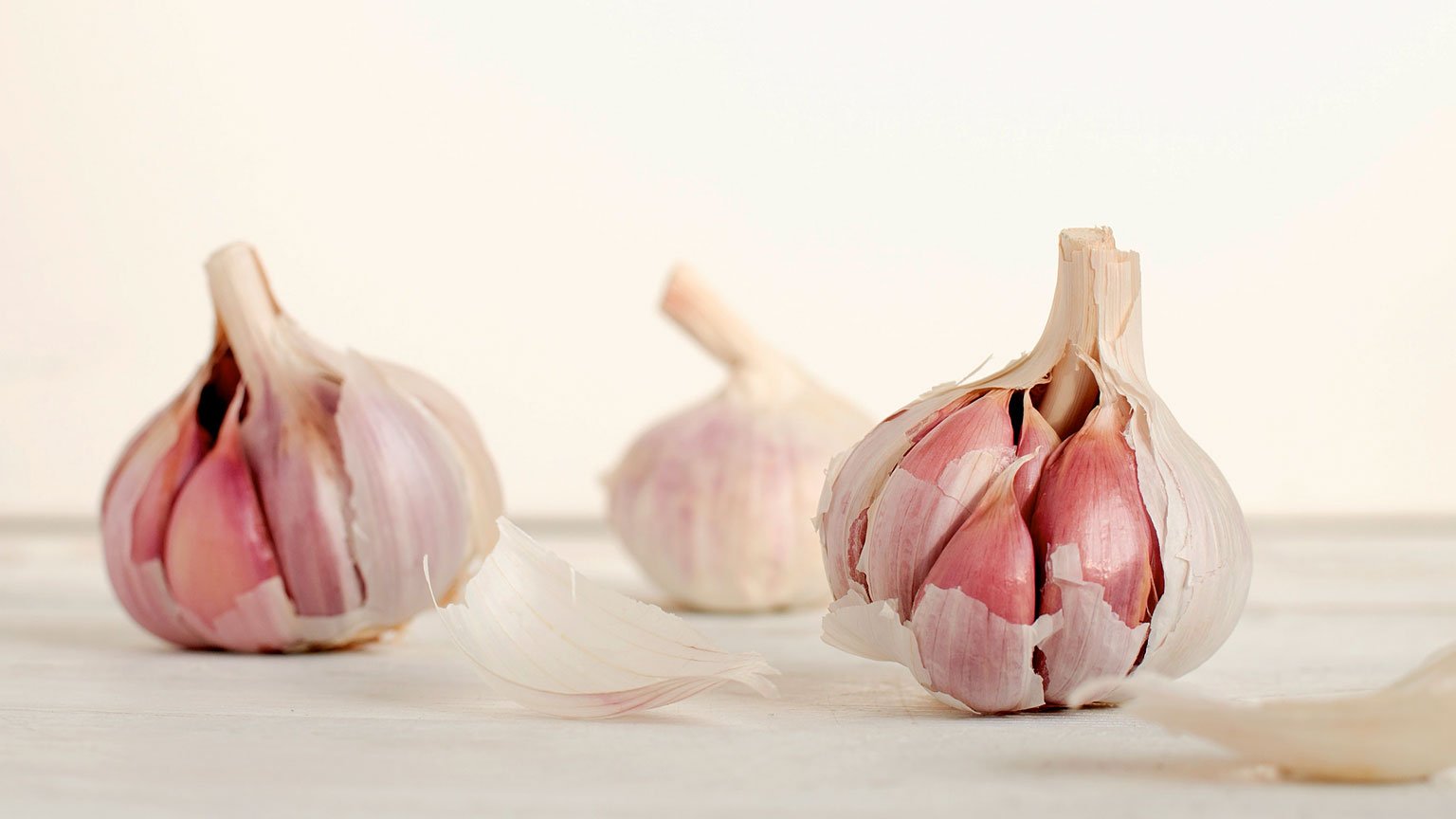Garlic

“Garlic. A faithful friend for almost any type of seasoning. Use with discretion.”
― James Beard
“Misuse of garlic is a crime. Old garlic, burnt garlic, garlic cut too long ago and garlic that has been tragically smashed through one of those abominations, the garlic press, are all disgusting. Please treat your garlic with respect. Too lazy to peel fresh? You don't deserve to eat garlic.”
― Anthony Bourdain
April is National Garlic Month, a fitting tribute to one of the world’s oldest cultivated plants, and one with a great many uses, both practical and fanciful. Where did this bulbous, odoriferous herb come from, and how did it become so ubiquitous?
Garlic, a member of the onion family (related to shallots and leeks), is thought to have originated in central Asia as early as 3,000 BC. Its name, an amalgam of the two Anglo-Saxon words “gar” and “lac,” means “spear plant” – possibly because of the distinctive shape of its leaves. Nobody knows who first discovered it, but from the beginning, these pungent bulbs, despite having been largely dismissed by such renowned early epicureans as Pliny the Elder and Apicius as food for the “rustics” (or lower classes) because of their strong aroma and “earthy” taste, appear to have been prized for their practical, and even mystical, attributes.
The ancient Egyptians were known to use garlic as currency, and the story goes that many of the slaves who built the pyramids were paid in garlic (in fact, it is rumored that a slave revolt was caused by a flood-induced garlic shortage). And no wonder: garlic’s medicinal qualities were (and are) legendary, used to treat everything from heart disease to elevated blood pressure and cholesterol levels, muscle weakness, open wounds, acne and other skin disturbances such as insect bites, colds and flu, toothaches, stomach upsets, and even cancer and the Black Plague. Garlic was also considered an effective treatment for impotence (it was typical for a bridegroom to include garlic in his boutonniere to guard against this on the honeymoon), and in a pinch, you could even use it to make glue!
Still, for a long time garlic definitely fell into the category of “a little goes a long way,” and its odor made anyone consuming it unwelcome in some public places, including religious institutions. Which is ironic, given that garlic has traditionally been known to ward off evil spirits – notably, vampires, if you believe Bram Stoker’s 1897 novel Dracula (where it is mentioned a whopping 21 times!). Garlic shows up a few times in Shakespeare’s and Chaucer’s works as well.
Here are some fun facts about it:
- China is by far the world’s largest producer of garlic, accounting for more than 2/3 of the world’s supply. Who grows the most garlic in America? California, by a mile -- almost 90% of U.S. garlic originates from the state, where the town of Gilroy bills itself “The Garlic Capital of the World” (with apologies to the Chinese!) and holds what the Guinness Book confirms is the world’s largest annual Garlic Festival. (Even the local McDonald’s offers Gilroy Garlic Fries.) Annual consumption of garlic by Americans? Roughly two pounds per person per year. No word on how this correlates to sales in the breath mint industry.
- There are more than 300 varieties of garlic cultivated worldwide.
- Not only is garlic a great bug repellant on your skin – it works on the flowers and plants in your garden, too.
- The flavor and aroma of garlic is strongest just after it has been minced.
- If you want to eliminate the odor of garlic on your hands, run them under cold water while rubbing something made of stainless steel.
- In the “Why the heck would anyone do this?” department, a Nepalese man currently holds the world record for downing the most cloves of garlic in one minute: 34. His significant other has not weighed in on this amazing feat, to our knowledge.
- And finally, something of local interest: the name “Chicago” stems from “Chicagaoua,” a Native American word meaning “wild garlic.” Or “smelly onion.” Same difference! These plants, also known as “ramps,” make a brief appearance each year in early spring, and are very popular with foragers, restaurateurs, and chefs who love to incorporate them in their cuisine, while they can.
Given its many health benefits, versatility, and distinctive flavor, we’re thinking it might be a good idea for all of us to eat more garlic. (Especially if there are vampires in the vicinity.)





